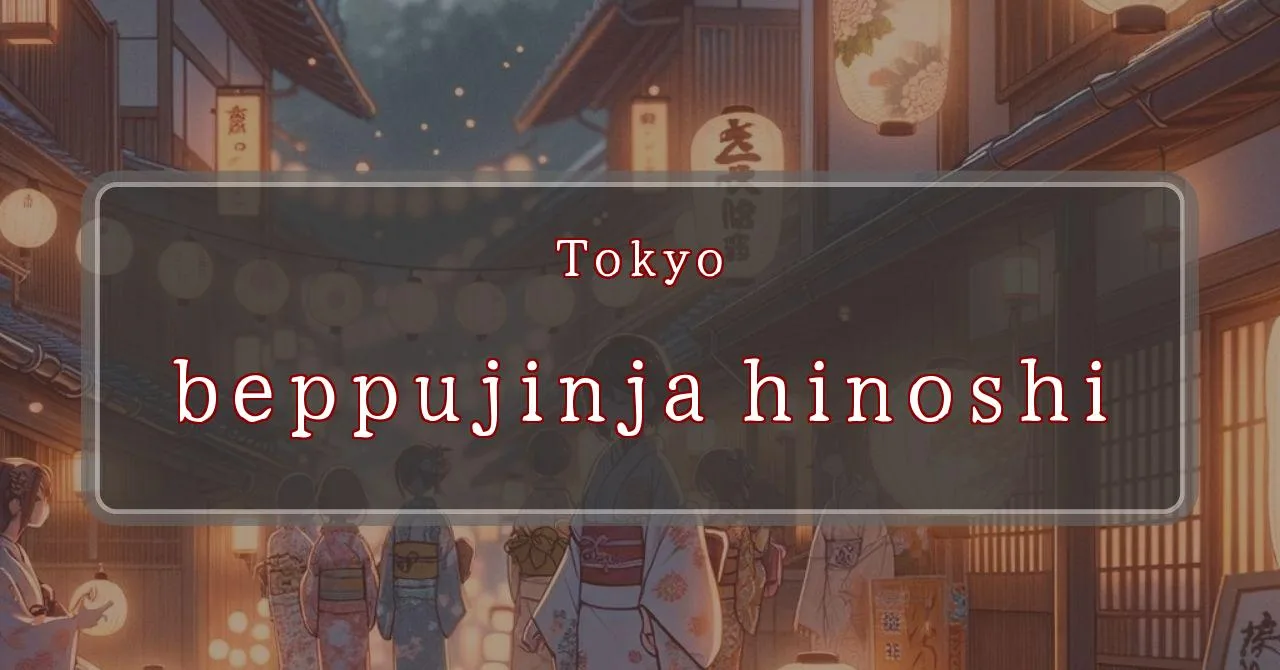Gleaming lights and divine spirits: Unveiling the magic of Hino’s Befu Shrine Festival
Basic Information
Befu Shrine is a Shinto shrine located in Hino City, Tokyo, Japan. It is dedicated to Befu no Kami, a deity associated with victory and good fortune.
- Address: 3-47-1 Mangaji, Hino City, Tokyo 191-0024
- Phone Number: 042-586-8808
- Access: 10-minute walk from the Keio Line Takao Station or the Tama Monorail Koshu Kaido Station
- Festival Days: September 14th (Sat), September 15th (Sun), 2024 (Reiwa 6)
Main Events and Attractions of the Festival
The Befu Shrine Festival is a two-day annual event held on September 14th and 15th. It features a variety of traditional Japanese cultural performances and activities, as well as food and game stalls.
Mikoshi Procession
One of the main highlights of the festival is the mikoshi procession. A mikoshi is a portable Shinto shrine, and during the procession, it is carried through the streets of Hino City by a team of people. The mikoshi is believed to be inhabited by the deity of the shrine, and carrying it is seen as a way to bring good luck and fortune to the community.
Kagura Performance
Kagura is a traditional Japanese Shinto dance and music performance. During the Befu Shrine Festival, kagura is performed by local practitioners in the shrine’s main hall. The performance is said to bring good luck and purification to the community.
Bon Odori Dance
Bon Odori is a traditional Japanese folk dance performed during the Obon festival, which is a time to honor the spirits of the dead. During the Befu Shrine Festival, Bon Odori is performed by local residents in the shrine’s courtyard. The dance is said to help guide the spirits of the dead back to their homes.
Food and Game Stalls
The festival also features a variety of food and game stalls. Visitors can enjoy traditional Japanese festival foods such as yakitori (grilled chicken skewers), takoyaki (octopus balls), and kakigori (shaved ice with syrup). There are also a variety of games and activities for children, such as goldfish scooping and ring toss.
Blessings and Deities
Befu Shrine is dedicated to Befu no Kami, a deity associated with victory and good fortune. It is believed that Befu no Kami once helped a local warrior named Befu Taro win a battle, and in gratitude, the warrior built the shrine to enshrine the deity.
- Deity: Befu no Kami
- Blessings: Victory, good fortune, success
Origin and History
The exact origins of Befu Shrine are unknown, but it is believed to have been founded in the Kamakura period (1185-1333). The shrine was originally located in a different part of Hino City, but it was moved to its current location in 1604.
- Founded: Kamakura period (1185-1333)
- Moved to current location: 1604
Tips and Notes for Visitors
The Befu Shrine Festival is a popular event, so it is advisable to arrive early to avoid crowds. The festival is held rain or shine, so be sure to dress appropriately for the weather.
- Arrive early to avoid crowds
- The festival is held rain or shine, so dress appropriately
- There are food and game stalls at the festival, so bring some cash
Parking Information
There is a parking lot near Befu Shrine, but it is limited. It is recommended to use public transportation or park in a nearby parking lot and walk to the shrine.
- Parking lot: Limited parking available near the shrine
- Public transportation: Keio Line Takao Station or Tama Monorail Koshu Kaido Station
Popular Stalls and Food Carts in Recent Years
| Type of Stall | Description |
|---|---|
| Takoyaki | A staple at Japanese festivals. Characterized by a crispy outside and a creamy inside. |
| Jaga Butter | A simple yet popular snack of hot potatoes lavishly topped with melted butter. |
| Baby Castella | Small castella cakes, sweet and fluffy treats enjoyed by children and adults alike. |
| Grilled Ayu with Salt | Fresh ayu fish grilled whole with salt, a savory taste of Japanese summer. |
| Shaapin | A unique gourmet item influenced by foreign cuisine, with a chewy skin wrapping the filling. |
| Okonomiyaki | A Japanese grilled dish where you often choose your own ingredients for a personalized flavor. |
| Cotton Candy | A fluffy, sweet snack that’s extremely popular with children. |
| Chocolate Banana | A banana coated in chocolate, a fun and visually appealing dessert. |
| Kushiyaki | Various types of ingredients skewered and grilled, an easy-to-enjoy snack. |
| Yakisoba | Fried noodles mixed with a special sauce, a fast food favorite in Japan. |



